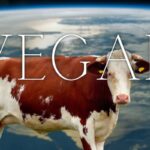Microplastics, those tiny fragments of plastic measuring less than 5 millimeters in size, have gained increasing attention due to their potential environmental impacts. While much of the focus has been on their presence in oceans and marine ecosystems, recent studies have revealed the alarming prevalence of microplastics in freshwater systems as well. This article delves into the widespread presence of microplastics in our rivers, lakes, and streams, shedding light on the potential consequences for both the environment and human health.
Research conducted worldwide has demonstrated that microplastics are pervasive in freshwater environments. They can enter these systems through various pathways, including urban runoff, wastewater treatment plants, and atmospheric deposition. Sources of microplastics in freshwater systems include fibers from synthetic clothing, microbeads from personal care products, and fragments from larger plastic debris. Additionally, plastic pollution can be transported from land-based sources to water bodies through rivers and wind.
Once in freshwater systems, microplastics pose a range of ecological challenges. Aquatic organisms, such as fish and invertebrates, can mistake microplastics for food, leading to ingestion and potential bioaccumulation in the food chain. Microplastics can also alter water quality, disrupt nutrient cycling, and impact the structure and function of freshwater ecosystems.
The presence of microplastics in freshwater systems raises concerns about the potential risks to human health. As microplastics enter the water supply, they can find their way into drinking water sources. While the full extent of the health impacts is still being studied, there are concerns about the ingestion of microplastics and the potential transfer of harmful chemicals and additives associated with plastic materials.
Addressing the issue of microplastics in freshwater systems requires a multifaceted approach. Efforts should be directed towards reducing the production and use of single-use plastics, implementing improved wastewater treatment processes, and raising awareness about the impacts of microplastics on freshwater ecosystems. Further research is needed to better understand the fate and transport of microplastics in freshwater systems and their long-term effects on aquatic organisms and human health.
In conclusion, the presence of microplastics in freshwater systems poses a significant environmental and potential human health concern. Understanding the sources, transport, and ecological impacts of microplastics in these environments is crucial for developing effective mitigation strategies and preserving the health of our freshwater ecosystems.




